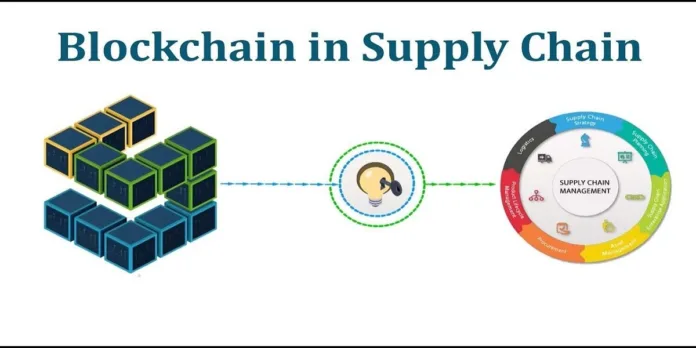
As global commerce becomes increasingly complex, the demand for transparency, traceability, and trust in the logistics ecosystem has never been greater. In 2025, blockchain in supply chain operations is emerging as a pivotal technology that is reshaping how products are tracked, verified, and delivered around the world.
At its core, blockchain is a decentralized digital ledger that records transactions in a secure and immutable manner. When applied to the supply chain, it creates a shared, transparent record of every step in a product’s journey—from raw material sourcing to final delivery. This transformation is enhancing accountability, combating fraud, and enabling real-time decision-making across global trade networks.
Why Supply Chain Needs Blockchain
Traditional supply chains suffer from fragmented data systems, lack of real-time visibility, and weak coordination between stakeholders. This often leads to delayed shipments, misplaced inventory, counterfeit products, and a lack of traceability. Blockchain in supply chain offers a powerful solution by establishing a single source of truth that all parties can trust.
With blockchain:
- Each transaction is recorded with a timestamp and digital signature.
- Data cannot be altered without consensus.
- Every participant has access to the same verified data.
This foundation of transparency strengthens trust between suppliers, manufacturers, transporters, retailers, and end consumers.
Benefits of Blockchain Logistics
1. Enhanced Supply Chain Transparency
Blockchain allows stakeholders to view a product’s complete history in real-time. From the moment a part is manufactured to its arrival at a store, all data is verifiable and immutable. This is particularly valuable in industries like food, pharmaceuticals, and electronics, where safety and authenticity are critical.
2. Improved Traceability in Logistics
With blockchain, companies can quickly trace contaminated or defective products back to their source. This facilitates faster recalls, reduces liability, and improves customer trust. The technology also helps detect fraud by verifying the origin of goods and preventing the insertion of counterfeit items.
3. Streamlined Compliance and Auditing
In regulated industries, compliance is often a manual and error-prone process. Blockchain automates documentation and creates audit trails that regulators can access instantly. This reduces paperwork, ensures data accuracy, and minimizes the risk of penalties.
4. Greater Operational Efficiency
Blockchain in supply chain streamlines administrative processes, reduces redundancies, and eliminates the need for third-party verification. Smart contracts—self-executing code on the blockchain—can automatically trigger payments, shipments, or alerts based on predefined conditions.
Real-World Applications in 2025
In 2025, we are witnessing widespread adoption of blockchain logistics across multiple sectors:
- Retail: Major retailers use blockchain to track goods from source to shelf, enabling customers to scan QR codes for detailed product histories.
- Food Industry: Agribusinesses use blockchain to trace the journey of produce, ensuring food safety and reducing spoilage.
- Pharmaceuticals: Drug manufacturers employ blockchain to combat counterfeit medicines and comply with health regulations.
- Automotive: Car makers track component authenticity and prevent the sale of counterfeit parts.
These implementations showcase how blockchain builds trust through radical visibility and data integrity.
Challenges to Overcome
Despite its benefits, blockchain in supply chain is not without obstacles:
- Integration Complexity: Legacy systems must be reconfigured or replaced to interact with blockchain networks.
- Standardization Issues: Interoperability between different blockchain platforms remains a hurdle.
- Data Privacy Concerns: While transparency is key, companies must balance openness with the protection of sensitive information.
- Cost of Implementation: High upfront costs can be a barrier for smaller businesses.
Overcoming these challenges requires industry collaboration, regulatory guidance, and investments in education and infrastructure.
The Future of Distributed Ledger Technology
Looking forward, distributed ledger technology will become a core pillar of global supply chain management. Advancements in edge computing, AI, and IoT will enhance blockchain’s capabilities by feeding real-time data directly into the ledger. Imagine sensors on pallets automatically logging temperature changes or GPS updates as goods move—creating a dynamic, tamper-proof digital trail.
Moreover, as sustainability becomes a business imperative, blockchain can verify the environmental and ethical sourcing of materials. Consumers will demand this level of transparency, and companies will adopt blockchain not just for efficiency, but for brand trust.
Conclusion
Blockchain in supply chain represents a revolution in how products are tracked, trusted, and traded in the global marketplace. With its ability to deliver transparency, traceability, and trust, blockchain is solving some of the most persistent challenges in modern logistics.
As 2025 progresses, the integration of blockchain into supply chain ecosystems will move from experimental pilots to essential infrastructure. Businesses that embrace this technology today will be better positioned to meet consumer expectations, navigate regulatory demands, and operate with resilience in a fast-evolving world.
The future of supply chain is decentralized, transparent, and powered by blockchain.